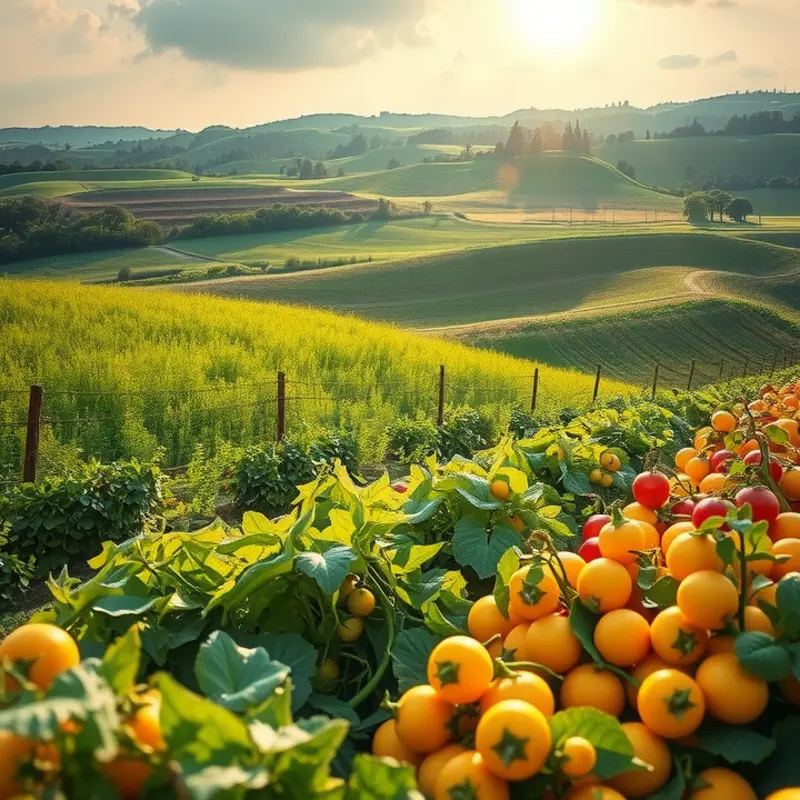Vegetables are a cornerstone of a healthy diet, yet preparing them can feel daunting. Whether you’re a novice in the kitchen or simply looking for quick ways to enhance your meals, simple vegetable side dishes can nourish your body while delighting your taste buds. Let’s explore some fast and wholesome recipes that make incorporating veggies into your meals a breeze.
Vibrant Veggie Stir-Fry: A Nutrient Packed Delight

Creating a vibrant veggie stir-fry is a fantastic way to incorporate a wide array of essential nutrients into your meal with minimal fuss. In just under 20 minutes, you can prepare a colorful dish that not only delights the senses but also supports a balanced diet. This stir-fry is adaptable, allowing you to use whatever vegetables are in season or readily available.
Start by gathering a variety of vegetables. Aim for a spectrum of colors to maximize nutritional benefits and visual appeal. Red bell peppers provide vitamin C and beta-carotene, while broccoli is rich in fiber and vitamin K. Add some carrots for a splash of orange, offering beta-carotene and potassium. Snow peas contribute a sweet crunch and are loaded with folate and vitamin C.
Chopping your vegetables evenly is key to ensuring they cook through at the same rate. Slice bell peppers into thin strips, chop broccoli into small florets, and cut carrots into matchsticks. This preparation style not only promotes even cooking but also enhances the dish’s presentation.
Next, heat a wok or large skillet over medium-high heat. Add a light oil with a high smoke point, such as avocado or canola oil. Once the oil shimmers, toss in the vegetables, starting with the firmer ones like carrots and broccoli, as they take slightly longer to cook. Stir constantly to prevent uneven cooking or burning.
While the vegetables are cooking, you can explore ways to boost the stir-fry’s flavor without adding excessive sodium. Consider integrating ginger and garlic for their natural umami. These ingredients not only enhance taste but also offer anti-inflammatory properties. For a complete guide on flavor enhancement without salt, you might find flavor boosters without salt to be a useful resource.
Add softer vegetables like snow peas and bell peppers a few minutes into cooking. These should only take a couple of minutes to tenderize while retaining their crunch. Soy sauce or tamari is a traditional seasoning for stir-fries; however, you can also opt for coconut aminos for a lower sodium option.
Before removing the stir-fry from the heat, toss in some toasted sesame seeds for texture and a nutty flavor. Additionally, stir in a handful of fresh spinach or baby kale right at the end. These greens will wilt quickly, contributing iron and vitamin A to round out the dish’s nutrient profile.
Vegetable stir-fries offer flexibility, making them perfect for meal prepping or using up what’s left in the fridge. They can be served over a bed of quinoa, brown rice, or noodles for a more filling meal. This quick-cook method preserves the vegetables’ crunchy texture and vivid color, ensuring they remain as nutritious as they are tasty.
Roasted Vegetable Medley: Simple and Savory

Roasting vegetables is a simple yet transformative cooking technique that brings out the natural sweetness and deep flavors of the vegetables. This method requires minimal ingredients but yields gourmet results.
To get started, select a variety of vegetables. A combination of root vegetables like carrots and sweet potatoes with cruciferous options such as broccoli and Brussels sprouts works beautifully. These vegetables maintain their structure when roasted and caramelize nicely, offering both sweetness and a satisfying crunch.
Preheat your oven to 425°F (220°C). A higher oven temperature ensures the vegetables caramelize without becoming mushy. While the oven heats, prepare your vegetables by washing and cutting them into roughly equal-sized pieces. Uniformity in size ensures even cooking, allowing each bite to deliver the same delectable taste.
Next, toss your vegetables in a large bowl with olive oil—about two tablespoons should suffice for four cups of mixed vegetables. The oil helps to achieve that perfect crispy coating. Don’t be afraid to season generously. A sprinkle of salt and fresh ground pepper forms the base, but you can expand the flavor profile with spices such as paprika, garlic powder, or even a pinch of cayenne for heat.
Arrange the vegetables in a single layer on a baking sheet. Overcrowding them can result in steaming rather than roasting, preventing those desirable crispy edges. Place the tray in the oven and roast for about 25 to 30 minutes, tossing them halfway through to ensure even cooking. Keep an eye out for caramelized edges as your indicator of doneness.
Once roasted, allow the vegetables to cool slightly before serving. This dish pairs well with a variety of main courses, adding both color and nutrition to your meal. The versatility extends to flavor combinations as well. Consider finishing with a drizzle of balsamic reduction or a squeeze of lemon for added brightness.
Storing leftover roasted vegetables is another advantage of this dish. They can be refrigerated and easily repurposed over the next few days. Add them cold to a salad, reheat as a quick side, or incorporate them into a grain bowl for a fast, wholesome meal. If you’re interested in more minimal prep ideas, this article on minimal prep dinner ideas offers exceptional tips.
With every batch, you’ll discover how the subtle differences in preparation can impact flavor and texture, making roasting an exciting method to master. It’s an excellent entry point into meal prepping for those new to cooking, allowing you to explore various combinations of herbs and spices. Let your creativity guide you, and soon this simple roasted vegetable medley will become a beloved staple in your culinary repertoire.
Final words
Incorporating vegetable side dishes into your meals doesn’t have to be difficult or time-consuming. With quick recipes like stir-fried or roasted vegetables, you can easily enhance your plate while boosting your nutritional intake. These methods not only retain the essential vitamins and minerals we need but also allow you to experiment with flavors and textures. Start small by trying out these dishes and build your confidence in the kitchen. Remember, health is a journey, and each delicious veggie dish is a step in the right direction!







